Reasonable selection of welding methods and processes for power battery manufacturing will directly affect the cost, quality, safety, and battery consistency of the battery. Next, we will sort out the contents of the power battery welding.
1 Laser welding principle
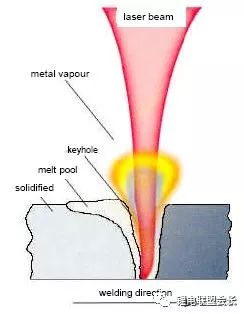
Laser welding utilizes the laser beam's excellent directionality and high power density characteristics to work through the optical system to focus the laser beam in a very small area, allowing the spot to be welded to form a highly concentrated heat source in a very short time. Zone, so that the weldment melts and forms a solid solder joint and weld.
2 laser welding type
Heat conduction welding and deep fusion welding
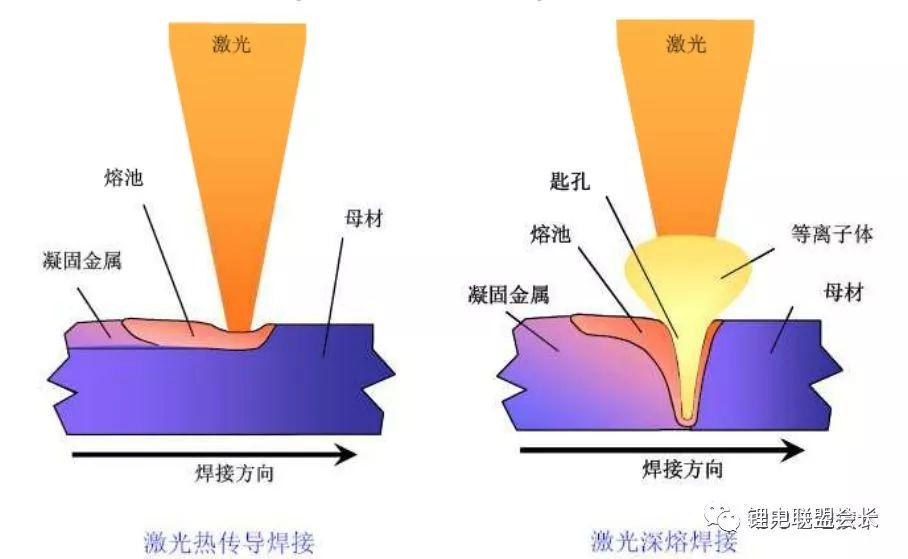
The laser power density is 105~106w/cm2 to form the laser heat conduction welding, and the laser power density is 105~106w/cm2 to form the laser deep fusion welding.
Through and seam welding
Through-welding, the connecting piece does not require punching, and machining is relatively simple. Penetration welding requires a power laser welding machine. Penetration penetration penetration is lower than that of seam welding and reliability is relatively poor.

Seam welding requires less power laser welding than penetration welding. The penetration depth of seam welding is higher than that of penetration welding and the reliability is relatively good. However, the connecting piece needs to be punched and the machining is relatively difficult.
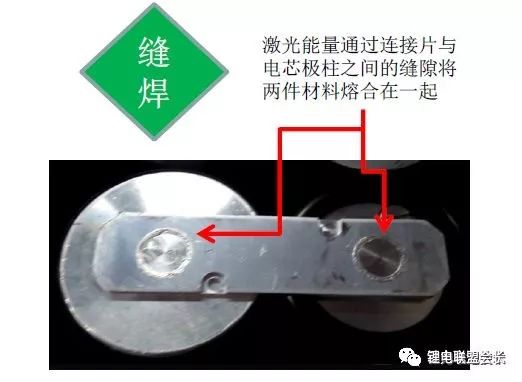
Pulse welding and continuous welding
1) Pulse mode welding
The appropriate welding waveform should be selected during laser welding. Commonly used pulse waveforms include square wave, peak wave and double peak wave. The reflectance of light on the aluminum alloy surface is too high. When a high-intensity laser beam hits the surface of the material, the metal surface will 60%-98% of the laser energy is lost due to reflection, and the reflectance varies with the surface temperature. Generally, when the aluminum alloy is welded, the sharp wave and the double-peak wave are optimally selected. After this type of welding waveform, the pulse width of the slow-down part is longer, and the generation of pores and cracks can be effectively reduced.
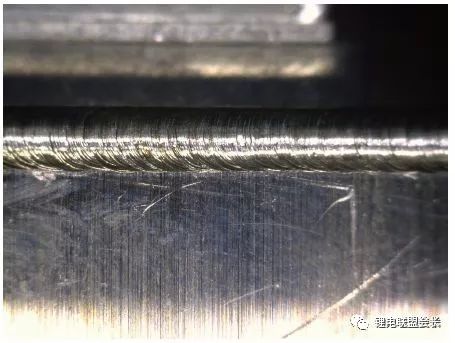
Pulse laser welding sample
Due to the high reflectivity of the aluminum alloy to the laser, in order to prevent the vertical reflection caused by the laser beam from damaging the laser focusing mirror, the welding head is usually deflected by a certain angle during the welding process. The diameter of the solder joint and the diameter of the effective bonding surface increase as the laser tilt angle increases. When the laser tilt angle is 40°, the maximum solder joint and effective bonding surface are obtained. The penetration depth of the solder joint and the effective penetration depth decrease with the inclination angle of the laser. When it is greater than 60°, the effective welding penetration is reduced to zero. Therefore, tilting the welding head to a certain angle can appropriately increase the weld penetration and the weld width.
In addition, when welding, with the weld line as the boundary, the laser welding spot must be welded with 65% of the deflector plate and 35% of the shell, which can effectively reduce the explosion caused by the joint cover problem.
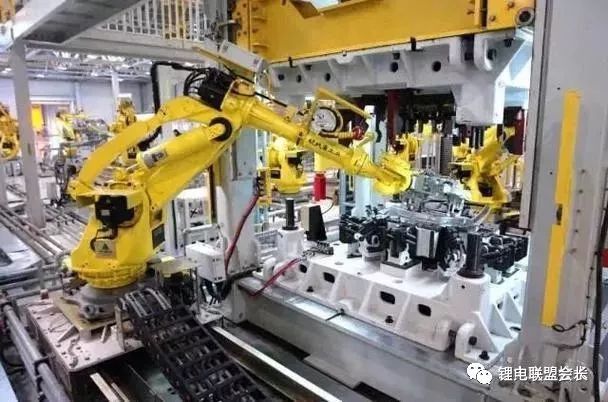
2) Continuous mode welding
Because the continuous laser welding process is not like the rapid quenching of pulsed machines, the cracking tendency during welding is not very obvious. In order to improve the weld quality, continuous laser welding is adopted, the weld surface is smooth and even, there is no spatter, and there is no defect. The inside of the weld is No cracks were found. In the welding of aluminum alloys, the advantage of the continuous laser is obvious. Compared with the traditional welding methods, the production efficiency is high and there is no need to fill the wire; compared with the pulsed laser welding, the defects generated after welding, such as cracks, can be solved. Blowholes, splashes, etc., ensure that the aluminum alloy has good mechanical properties after welding; it will not sag after welding, the amount of polishing and polishing after welding will be reduced, and the production cost will be saved, but because the spot of the continuous laser is relatively small, the assembly accuracy of the workpiece is High demand.

Continuous laser welding sample
In the power battery welding, the welding process technicians will select the appropriate laser and welding process parameters according to the customer's battery material, shape, thickness, pull force requirements, etc., including welding speed, waveform, peak value, welding head tilt angle, etc. to set reasonable Welding process parameters to ensure that the final welding results meet the requirements of power battery manufacturers.
3 Laser welding advantages
Concentration of energy, high welding efficiency, high machining accuracy, and large weld-width ratio. The laser beam is easy to focus, align and guided by the optical instrument. It can be placed at an appropriate distance from the workpiece and can be guided between fixtures or obstacles around the workpiece. Other welding methods cannot be performed due to the above space limitations.
The heat input is small, the heat affected zone is small, the residual stress and deformation of the workpiece are small, the welding energy can be precisely controlled, the welding effect is stable, and the welding appearance is good;
Non-contact welding, optical fiber transmission, good accessibility, high degree of automation. When welding thin materials or thin-diameter wires, they do not suffer from reflow problems like arc welding. The battery cells used for power batteries are usually made of “light†aluminum materials because they follow the “light†principle. They also need to be made “thinnerâ€. Generally, shells, covers, and bottoms are required to be less than 1.0 mm. The current basic material thickness of mainstream manufacturers is about 0.8 mm.
It can provide high-strength welding for various material combinations, especially when performing welding between copper materials and aluminum materials. This is the only technique that can weld electroplated nickel onto copper materials.
4 Laser welding process difficulties
At present, the battery shell of aluminum alloy material accounts for more than 90% of the entire power battery. The difficulty in welding is that the aluminum alloy has a high reflectivity to the laser, and has a high sensitivity to the porosity during the welding process. Inevitably, some problem defects occur during welding. The most important ones are the air holes, hot cracks, and explosions.
In the laser welding process of aluminum alloys, pores are easily generated. There are mainly two types of pores: hydrogen gas pores and pores generated by the collapse of bubbles. As the cooling speed of the laser welding is too fast, the hydrogen hole problem is more serious, and there is also a class of holes generated in the laser welding due to the collapse of the small holes.
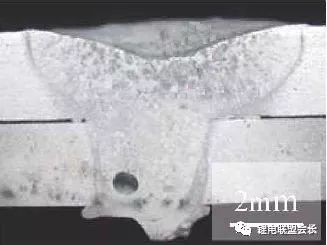
Hot crack problem. Aluminum alloys are typical eutectic alloys, which are prone to hot cracks during welding, including weld crystal cracks and HAZ liquefaction cracks. As a result of segregation in the weld zone, eutectic segregation occurs and grain boundary melting occurs. Liquefied cracks form at the grain boundaries, reducing the performance of the welded joints.
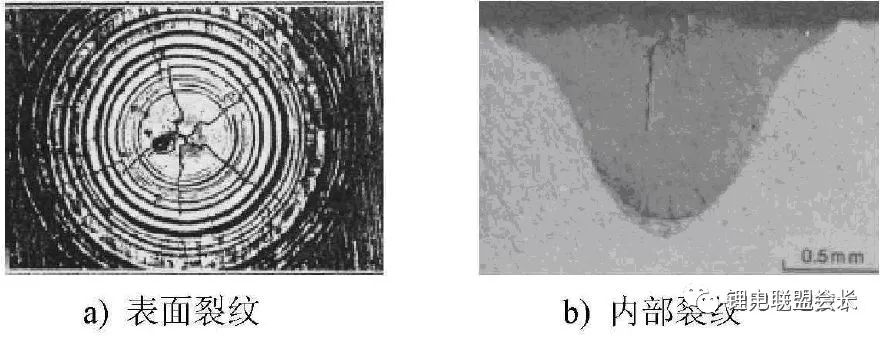
Explosion (also known as splash) problems. There are many factors that cause the explosion, such as the cleanliness of the material, the purity of the material itself, the characteristics of the material itself, and the decisive role is the stability of the laser. Shell surface convex, air holes, internal air bubbles. The reason is mainly due to the fiber core diameter is too small or the laser energy is set too high. It is not that some laser equipment providers are proposing that “the better the beam quality, the better the welding effectâ€, and the good beam quality is suitable for superimposing welding with deep penetration. Finding the right process parameters is the magic weapon to solve the problem.

Other difficulties
Soft-legged ear-fed welding requires high welding tooling, and the tab must be firmly secured to ensure welding clearance. High-speed welding of complex trajectories such as S-shape and spiral shape can be realized, and the weld joint strength can be enhanced while increasing the weld joint area.
The welding of the cylindrical core is mainly used for the welding of the positive electrode. Since the negative electrode shell is thin, it is extremely easy to weld. For example, at present, some manufacturers use the negative electrode free welding process, and the positive electrode uses laser welding.
When the square battery is assembled and welded, the pole or connecting piece is contaminated. When the connecting piece is welded, the contaminants decompose, and it is easy to form a welded blast, resulting in a hole; the battery with a thin pole and a plastic or ceramic structure is easy to be welded. wear. When the pole is small, it is easy to weld to the plastic and cause the explosion. Do not use multi-layer connectors. Porosity between layers is not easy to weld.
The most important process for the welding process of the square battery is the package of the shell cover, which is divided into the welding of the top cover and the bottom cover according to the location. Some battery manufacturers use the "draw-in" process to make the battery case due to the small size of the battery. Only the top cover is welded.
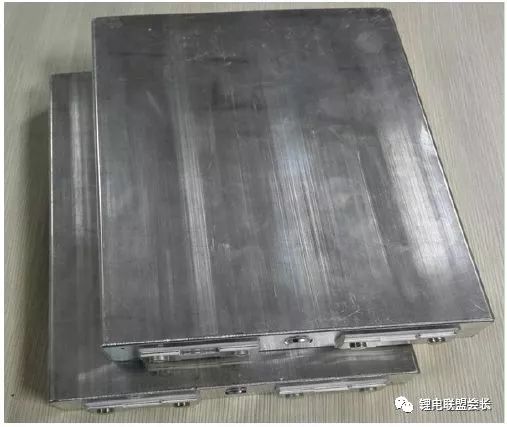
Square power battery side welding sample
The square battery welding method is mainly divided into side welding and top welding. The main advantage of the side welding is that it has less influence on the inside of the battery core, and spatter does not easily enter the inside of the cover. Since soldering may cause bumps, this will have a slight influence on the assembly of subsequent processes. Therefore, the side soldering process has extremely high requirements on the stability of the laser and the cleanliness of the material. Because the top welding process is welded on one surface, the integration requirements for the welding equipment are relatively low, and the mass production is simple, but there are also two disadvantages. First, welding may have a little splash into the battery core, and the second is the front part of the housing. High processing requirements can cause cost problems.
5 Factors affecting welding quality
Laser welding is currently the main method of high-end battery welding. Laser welding is a high-energy beam laser that irradiates the workpiece, causing the operating temperature to rise sharply, melting the workpiece and reconnecting it to form a permanent connection. Laser welding has better shear strength and tear strength. The quality of battery welding, its electrical conductivity, strength, air tightness, metal fatigue and corrosion resistance are typical welding quality evaluation standards.
There are many factors that affect the quality of laser welding. Some of them are very volatile and have considerable instability. How to correctly set and control these parameters so that they can be controlled within a suitable range during high-speed continuous laser welding to ensure the welding quality. The reliability and stability of weld formation are important issues related to the practical application and industrialization of laser welding technology. The main factors affecting the quality of laser welding are divided into three aspects: welding equipment, workpiece conditions and process parameters.
1) Welding equipment The most important quality requirements for lasers are beam mode and output power and their stability. The beam mode is the main indicator of the beam quality. The lower the order of the beam mode, the better the focusing performance of the beam. The smaller the spot, the higher the power density at the same laser power, and the greater the width and depth of the weld. Basic mode (TEM00) or low-order modes are generally required, otherwise it is difficult to meet the requirements of high-quality laser welding. At present, domestic lasers have some difficulties in laser welding in terms of beam quality and power output stability. From the perspective of foreign countries, the laser beam quality and output power stability have been quite high and will not become laser welding problems. The biggest factor affecting the welding quality in the optical system is the focusing lens. The focal length used is generally between 127mm (5in) and 200mm (7.9in). The small focal length is good for reducing the waist beam diameter of the focused beam, but too small is easy to weld. Contamination and splash damage during the process.
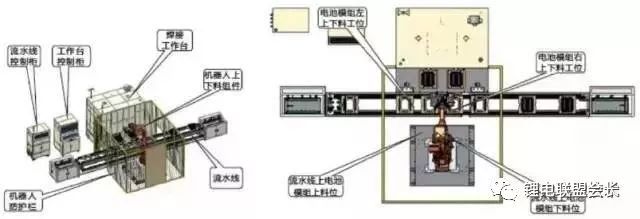
The shorter the wavelength, the higher the absorptivity; generally the material with good conductivity has high reflectivity. For YAG lasers, the reflectivity of silver is 96%, aluminum is 92%, copper is 90%, and iron is 60%. The higher the temperature, the higher the absorption rate and the linear relationship; the general surface coating of phosphate, carbon black, graphite, etc. can improve the absorption rate.
2) Workpiece status
Laser welding requires machining of the edge of the workpiece. The assembly has a high degree of accuracy. The spot and the weld seam are strictly centered, and the workpiece's original assembly accuracy and spot alignment cannot be changed by welding thermal deformation during the welding process. This is because the laser spot is small, the weld seam is narrow, and generally no filler metal is added. If the loose gap is too large, the beam can pass through the gap and cannot melt the parent metal, or cause obvious undercuts and dents, such as deviation of the spot from the seam. Slightly larger may cause unfused or incomplete penetration. Therefore, the general plate butt joint assembly gap and spot deviation should not be greater than 0.1mm, the wrong side should not exceed 0.2mm. In actual production, laser welding technology cannot be used because sometimes these requirements cannot be met. To obtain a good welding effect, the docking allowance gap and the overlap gap should be controlled within 10% of the thickness of the thin plate.
Successful laser welding requires close contact between the substrates being welded. This requires careful tightening of the parts for best results. This is difficult to do on a thin, tabbed substrate because it is prone to bending misalignment, especially if the tab is embedded in a large battery module or assembly.
3) Welding parameters
(1) Effect on laser welding mode and weld forming stability The most important parameter in the welding parameters is the power density of the laser spot. The effect on the welding mode and the forming stability of the weld is as follows: The power density varies from small to large with the laser spot. Followed by stable thermal conductivity welding, mode unstable welding and stable deep penetration welding. The power density of the laser spot is determined mainly by the laser power and the focus position of the beam in the case of a constant beam pattern and focal length of the focusing lens. The laser power density is proportional to the laser power. However, there is an optimal value for the influence of the focus position; when the beam focus is at a position below the surface of the workpiece (in the range of 1 to 2 mm, depending on the thickness and the parameters), the most ideal weld seam can be obtained. Deviating from this optimal focus position, the spot on the surface of the workpiece becomes larger, causing the power density to become smaller, and to a certain extent, it will cause changes in the form of the welding process.
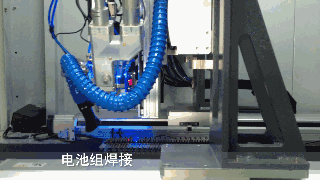
The effect of the welding speed on the welding process form and the stabilizing member is not as pronounced as the laser power and the focus position. Only when the welding speed is too large, a stable deep fusion welding process cannot be maintained because the heat input is too small. In actual welding, stable deep penetration welding or stable thermal conduction welding should be selected according to the requirements of weldment's depth of penetration, and mode instability welding must be absolutely avoided.
(2) Within the range of deep penetration welding, the influence of welding parameters on penetration depth: In the range of stable deep penetration welding, the higher the laser power, the greater the penetration depth, which is about 0.7 power; and the higher the welding speed is. The shallower the penetration. The depth of penetration is greatest when the focal point is at the optimal position under certain laser power and welding speed conditions. Deviating from this position, the penetration depth decreases, and even becomes unstable mode welding or stable thermal conduction welding.
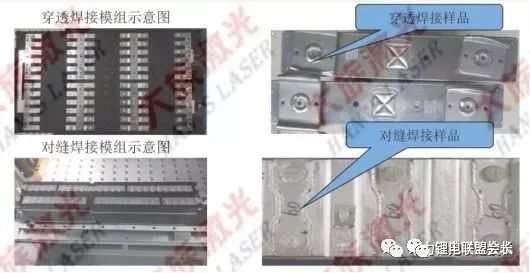
(3) The influence of shielding gas. The main function of the shielding gas is to protect the workpiece from oxidation during the welding process; to protect the focusing lens from metal vapor pollution and sputtering of liquid droplets; to disperse the plasma generated by high-power laser welding; cooling Workpiece, reduce heat affected zone.
Argon gas or helium gas is usually used for shielding gas, and nitrogen gas can also be used for low apparent quality requirements. Their propensity to generate plasma is significantly different: helium because of its high ionized electric body, fast heat conduction, under the same conditions, the propensity for argon to generate plasma is smaller, and thus can obtain a greater penetration depth. Within a certain range, as the flow rate of the shielding gas increases, the tendency to suppress the plasma increases, so the penetration depth increases, but it tends to be stable when it increases to a certain range.
(4) Monitorability analysis of each parameter: Among the four welding parameters, the welding speed and the shielding gas flow rate are parameters that are easy to monitor and maintain stable, and the laser power and focus position are likely to fluctuate during the welding process and are difficult to monitor. The parameters. Although the laser power output from the laser is highly stable and easily monitored, the laser power reaching the workpiece changes due to the loss of the light guide and focus system. This loss is related to the quality, use time, and surface contamination of the optical workpiece. The situation is relevant, so it is not easy to monitor and become an uncertain factor for welding quality. The focus position of the beam is a factor that has a great influence on the quality of the welding in the welding parameters and is the most difficult to monitor and control. At present, in the production, it is necessary to determine the appropriate focus position by means of manual adjustment and repeated process tests to obtain the desired penetration depth. However, in the welding process, due to deformation of the workpiece, thermal lens effect or multi-dimensional welding of the space curve, the focus position may change and may exceed the allowable range.
For the above two cases, high-quality, high-stability optical components are used on the one hand, and they are frequently maintained to prevent contamination and keep them clean. On the other hand, it is required to develop real-time monitoring and control methods for the laser welding process in order to optimize parameters and monitor arrivals. The change of the laser power and focus position of the workpiece realizes closed-loop control and improves the reliability and stability of laser welding quality.
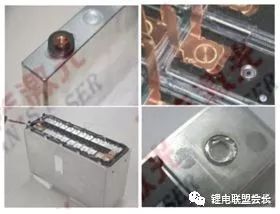
Finally, it should be noted that laser welding is a melting process. This means that the two substrates melt during laser welding. This process is fast, so the overall heat input is low. But because this is a melting process, it is possible to form brittle high-resistance intermetallic compounds when welding different materials. Aluminum-copper combinations are particularly susceptible to the formation of intermetallic compounds. These compounds have proven to have a negative impact on the short-term electrical properties and long-term mechanical properties of microelectronic devices. The effect of these intermetallic compounds on the long-term performance of lithium batteries is uncertain.
With more than 15+ yrs rich MFG experience, you can definitely trust in and cooperate with.
Provide you with the supply of Personal Protective Equipment. to help you safely get back to your daily routine.
Our products include pulse Oximeter Finger, Forehead Thermometer, Automatic foam soap dispenser, etc.
Our strict quality control protocol thoroughly vets every aspect of production, storage, and shipments all the way way to our end customers.
infrared thermometers wholesale, forehead thermometer wholesale,wholesale thermometer suppliers
TOPNOTCH INTERNATIONAL GROUP LIMITED , https://www.itopnoobluetoothes.com